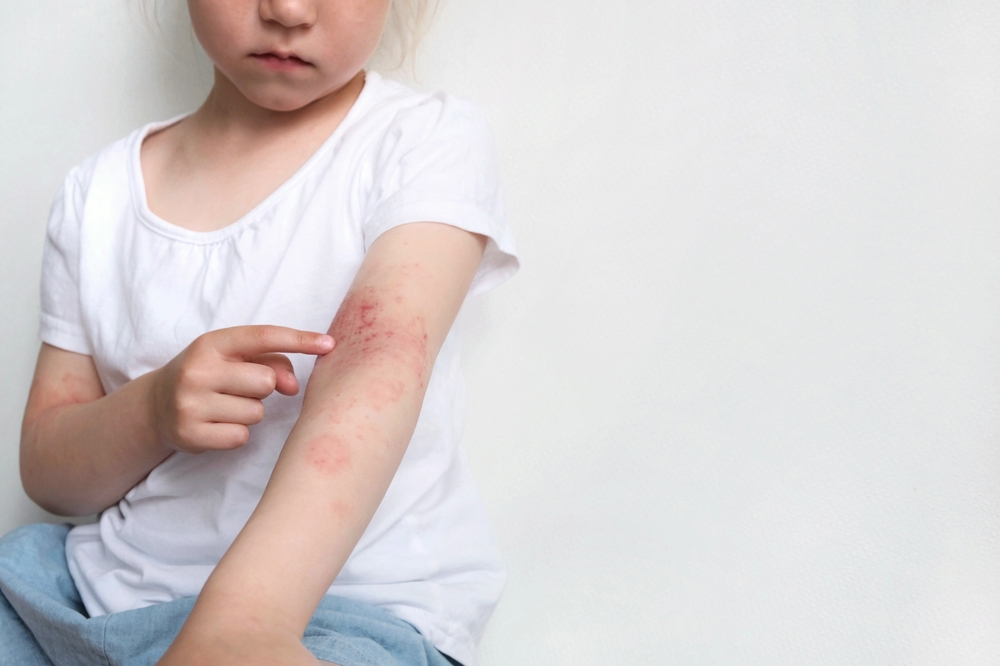
What Causes Pediatric (Childhood) Psoriasis?
Psoriasis affects people of any age and can be challenging to identify, especially among children. Almost 40% of individuals with psoriasis skin have symptoms before 16 years old, and 10% get it before age 10. It can be painful and ruin your sleep, and sometimes be inflammatory. People with a genetic predisposition to psoriasis include triggers like infections, cuts, and burns. This blog is designed to highlight Paediatric psoriasis. Although several remedies are available, identifying psoriasis skin in children is crucial for early treatment. Have a closer look at paediatric psoriasis below:
What is Psoriasis?
Psoriasis is a chronic skin condition that is autoimmune and causes the formation of scaly, red patches that appear over the body. It is usually seen on the scalp, elbows knees, lower back. However, it can appear everywhere in your body. It isn't contagious and does not result from the presence of an infection.
Psoriasis is believed to result from a combination of environmental and genetic causes. It happens when the immune system accidentally attacks healthy skin cells. The result is that the cells of the skin multiply rapidly and lead to the growth of skin cells located on skin surfaces.
The affected children denleys a red rash and scaly patches commonly on knees, elbows, and scalp, and trunk, which can be itchy, sore, and unappealing.
Although there is no permanent cure for this condition but, some treatments may help to reduce symptoms and help slow the progression of the disease. Alongside treatments for medical conditions, lifestyle changes can help reduce psoriasis symptoms. Avoidance of triggers like dry skin, smoking, and stress can help reduce flare-ups. It is essential to keep your skin moisturized and free of harsh detergents and soaps and wear loose and comfortable clothes.
Types of Psoriasis
Psoriasis is a complicated skin infection in different forms, each with its unique signs and triggers. The common types of psoriasis include:
- Plaque psoriasis
- Guttate psoriasis
- Inverse psoriasis
- Pustular psoriasis
The types of psoriasis are alike in both children and adults, but there are some differences between paediatric and adult psoriasis. For example, paediatric psoriasis may be more severe, have different triggers, and may be more challenging to manage than adult psoriasis. So, it is essential to understand the different forms of psoriasis skin to receive a proper diagnosis and develop an effective treatment plan.
Causes of Psoriasis in Children
Uncovering the Root Causes of Paediatric Psoriasis: Genetics, Environment, and Immune System Dysfunction can be the root cause of paediatric psoriasis. The actual reasons for paediatric psoriasis are not yet discovered, but research suggests that a combination of genetic and environmental factors can play a role in its development. Some of the most
common causes of paediatric psoriasis include:
- Genetics: A family history of psoriasis increases the risk of conditions in children.
- Environmental triggers: Outbreaks in children with psoriasis skin can be triggered by exposure to certain irritants or stressors.
- Immune system dysfunction: Paediatric psoriasis is related to an overactive immune system, leading to inflammation and red, scaly patches on the skin.
By understanding the root causes of pediatric psoriasis, you can take measures to control your child's disease and reduce the risk of future flare-ups.
Psoriasis Diagnosis
Diagnosing Paediatric Psoriasis: Paediatric psoriasis can be a complicated condition to analyze, as the symptoms can differ depending on the type of psoriasis and the particular child. Some common symptoms of pediatric psoriasis include:
- Red, scaly patches on the skin
- Itching or burning sensation
- Pain or discomfort
In a suspected case of psoriasis, a healthcare provider will physically examine the psoriasis skin and question the child's symptoms and medical history. A skin biopsy could be needed for confirmation of the diagnosis. It is essential to receive an accurate diagnosis, as the proper treatment plan will depend on the type and severity of the condition.
Psoriasis Treatment
Management of Paediatric Psoriasis requires a personalized strategy considering the child's age, type of psoriasis skin, and overall health. Some standard treatment options for paediatric psoriasis include:
- Topical treatments: Ointments, creams, and gels to relieve itching and reduce redness and scaling by applying them directly to the skin.
- Systemic treatments: Medications taken orally or by injection to help control psoriasis symptoms and reduce inflammation throughout the body.
- Phototherapy: A treatment that uses ultraviolet light to help control psoriasis symptoms.
When deciding on a treatment plan for a child with psoriasis skin, it is essential to consider the possible side effects and risks, the child's age and overall health.
Conclusion
So now that we have explored the causes and treatments of paediatric psoriasis and understood the importance of early and accurate psoriasis diagnosis, every parent must understand this condition better and make informed decisions about the care and treatment of their children.
If you observe any symptoms in your child, make an appointment with the unit of paediatrics and dermatology for the most effective diagnosis. If you are sure about the severity, reach out to the doctor to learn more about the condition and the available treatment options that will meet your requirements.





